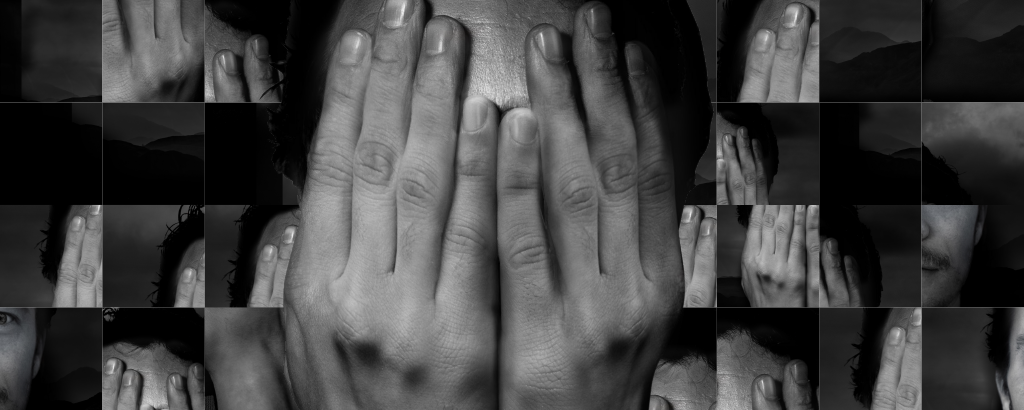
How schizophrenia is diagnosed
Schizophrenia is diagnosed on the basis of a consultation with the affected person. Specific diagnostic tools, in the form of a series of structured questions, will be used during the consultation to facilitate an accurate diagnosis.
Other relevant information about the patient may be also be taken into account, often from relatives or people who are very close to the patient.1
Methods of diagnosis
There's no single test for schizophrenia and the condition is usually diagnosed after assessment by a psychiatrist. In the USA, the main diagnostic method is based on the Diagnostic and Statistical Manual (known as DSM V).
In Europe, diagnosis of schizophrenia may be based on the International Classification of Diseases (ICD), 10th revision.2
Disorders of brain function are rarely clear-cut due to their complexity so a working diagnosis may be made initially which may later be changed once the doctor fully understands the patient.
Schizophrenia and schizo-affective disorder
There are two psychotic illnesses: schizophrenia and bipolar disorder (previously called manic depression). Some doctors will also give a diagnosis of schizo-affective disorder to describe a condition that falls between the two classifications. It is quite common for a patient to be given a working diagnosis of schizo-affective disorder at first only for it to be changed to schizophrenia (or the other way around) later. A diagnosis of schizo-affective disorder will be made if the symptoms of schizophrenia are present alongside disturbances of mood such as depression or manic moods.1
Positive and negative symptoms
Symptoms of schizophrenia are usually divided into two categories: positive and negative.
Subtypes of schizophrenia
There are many subtypes of schizophrenia, but there are seven subtypes that the ICD-10 provide diagnostic criteria for:3
Paranoid schizophrenia
Catatonic schizophrenia
Postschizophrenic depression
Simple schizophrenia
Hebephrenic schizophrenia
Undifferentiated schizophrenia
Residual schizophrenia
With the exception of simple schizophrenia which has its own criteria, all these subtypes must meet the general criteria for the diagnosis of schizophrenia, plus certain subtype-specific criteria in the ICD-10. These criteria will be listed in the following section.
International Classification of Diseases (ICD 10) Diagnostic Criteria for Schizophrenia3,4
ICD-10 general criteria for the diagnosis of schizophrenia
The general criteria listed in the ICD-10 for the diagnosis of schizophrenia are listed below.
Either at least one of the syndromes, symptoms, and signs listed under (1) below, or at least two of the symptoms and signs listed under (2) should be present for most of the time during an episode of psychotic illness lasting for at least 1 month (or at some time during most of the days).
1. At least one of the following must be present:
Thought echo, thought insertion/withdrawal or thought broadcasting
Delusions of control, influence or passivity, clearly referred to body or limb movements or specific thoughts, actions or sensations; delusional perception
Hallucinatory voices giving a running commentary on the patient’s behaviour, discussing the patient among themselves or other types of hallucinatory voices coming from some part of the body
Persistent delusions of other kinds that are culturally inappropriate and completely impossible (e.g. being able to control the weather or being in communication with aliens from another world)
2. Or at least two of the following:
Persistent hallucinations in any modality, when occurring every day for at least 1 month, when accompanied by delusions (which may be fleeting or half-formed) without clear affective content or when accompanied by persistent overvalued ideas
Neologisms, breaks or interpolations in the train of thought, resulting in incoherence or irrelevant speech
-
Catatonic behaviour, such as excitement, posturing or waxy flexibility, negativism, mutism and stupor
Negative symptoms, such as marked apathy, paucity of speech and blunting or incongruity of emotional responses (it must be clear that these are not due to depression or to neuroleptic medication)
The most common exclusion clauses are:
if the patient also meets criteria for manic episode or depressive episode, the criteria listed under section (1) and (2) above must have been met before the disturbance of mood developed.
the disorder is not attributable to organic brain disease or to alcohol- or drug-related intoxication, dependence, or withdrawal.
ICD-10 criteria for the diagnosis of specific schizophrenia subtypes
Specific schizophrenia subtypes have their own criteria for diagnosis in the ICD-10, in addition to the general criteria above.4
-
PARANOID SCHIZOPHRENIA
1.The general criteria for schizophrenia must be met.
2. Delusions or hallucinations must be prominent (such as delusions of persecution, reference, exalted birth, special mission, bodily change, or jealousy; threatening or commanding voices, hallucinations of smell or taste, sexual or other bodily sensations).
3.Flattening or incongruity of affect, catatonic symptoms, or incoherent speech must not dominate the clinical picture, although they may be present to a mild degree.
-
HEBEPHRENIC SCHIZOPHRENIA
1.The general criteria for schizophrenia must be met.
2.Either of the following must be present:
-
Definite and sustained flattening or shallowness of affect.
Definite and sustained incongruity or inappropriateness of affect.
3. Either of the following must be present:
-
Behaviour that is aimless and disjointed rather than goal-directed.
Definite thought disorder, manifesting as speech that is disjointed, rambling or incoherent.
4. Hallucinations or delusions must not dominate the clinical picture although they may be present to a mild degree.
-
CATATONIC SCHIZOPHRENIA
1.The general criteria for schizophrenia must eventually be met, although this may not be possible initially if the patient is uncommunicative.
2.For a period of at least 2 weeks one or more of the following catatonic behaviours must be prominent:
-
Stupor (marked decrease in reactivity to the environment and reduction of spontaneous movements and activity) or mutism.
Excitement (apparently purposeless motor activity, not influenced by external stimuli).
Posturing (voluntary assumption and maintenance of inappropriate or bizarre postures).
Negativism (an apparently motiveless resistance to all instructions or attempts to be moved, or movement in the opposite direction).
Rigidity (maintenance of a rigid posture against efforts to be moved).
Waxy flexibility (maintenance of limbs and body in externally imposed positions).
Command automatism (automatic compliance with instruction).
-
UNDIFFERENTIATED SCHIZOPHRENIA
1.The general criteria for schizophrenia must be met.
2. Either of the following must apply:
-
Insufficient symptoms to meet the criteria for any of the subtypes.
So many symptoms that the criteria for more than one of the subtypes listed above are met.
-
POSTSCHIZOPHRENIC DEPRESSION
1.The general criteria for schizophrenia must have been met within the past 12 months, but are not met at the present time.
2. One of the conditions for general schizophrenia in criterion 2 (a-d) must still be present.
3. The depressive symptoms must be sufficiently prolonged, severe, and extensive to meet criteria for at least a mild depressive episode.
-
RESIDUAL SCHIZOPHRENIA
1.The general criteria for schizophrenia must have been met at some time in the past but are not met at the present time.
2.At least four of the following negative symptoms have been present throughout the previous 12 months:
-
Psychomotor slowing or underactivity.
Definite blunting of affect.
Passivity and lack of initiative.
Poverty of either the quantity or the content of speech.
Poor nonverbal communication by facial expression, eye contact, voice modulation or posture.
Poor social performance or self-care.
-
SIMPLE SCHIZOPHRENIA
1. There is slow but progressive development, over a period of at least 1 year, of all three of the following:
-
A significant and consistent change in the overall quality of some aspects of personal behaviour, manifest as loss of drive and interests, aimlessness, idleness, a self-absorbed attitude and social withdrawal.
A gradual appearance and deepening of negative symptoms such as marked apathy, paucity of speech, underactivity, blunting of affect, passivity and lack of initiative and poor nonverbal communication (by facial expression, eye contact, voice modulation and posture).
A marked decline in social, scholastic or occupational performance.
2. At no time are there any of the criteria for general schizophrenia, nor are there hallucinations or well-formed delusions of any kind; i.e., the individual must never have met the criteria for any other type of schizophrenia or for any other psychotic disorder.
3. There is no evidence of dementia or any other organic mental disorder.
References
- Living with schizophrenia UK. Available at: https://livingwithschizophreniauk.org/ (last accessed May 2023).
- International Statistical Classification of Diseases and Related Health Problems, 10th Revision (ICD-10)-WHO Version; 2016. Available at: http://apps.who.int/classifications/icd10/browse/2016/en (last accessed May 2023).
- Kraeplin Psychiatry. WordPress, 2010. Available at:https://kraeplinpsychiatry.wordpress.com/2010/06/17/icd-10-diagnosis-for-schizophrenia/ (last accessed May 2023).
- World Health Organization. The ICD-10 Classification of Mental and Behavioural Disorders: Diagnostic Criteria for Research. Copyright, World Health Organization, Geneva, 1993.
CLZ-2022-0098 May 2023
Viatris Connect is an online platform for UK health Professionals.
Across the website you will find news, blogs and product information.
Register to Viatris Connect today
Please note that the website contains promotional and non-promotional material including educational content and resources to help you and your patients.
REGISTER NOW


